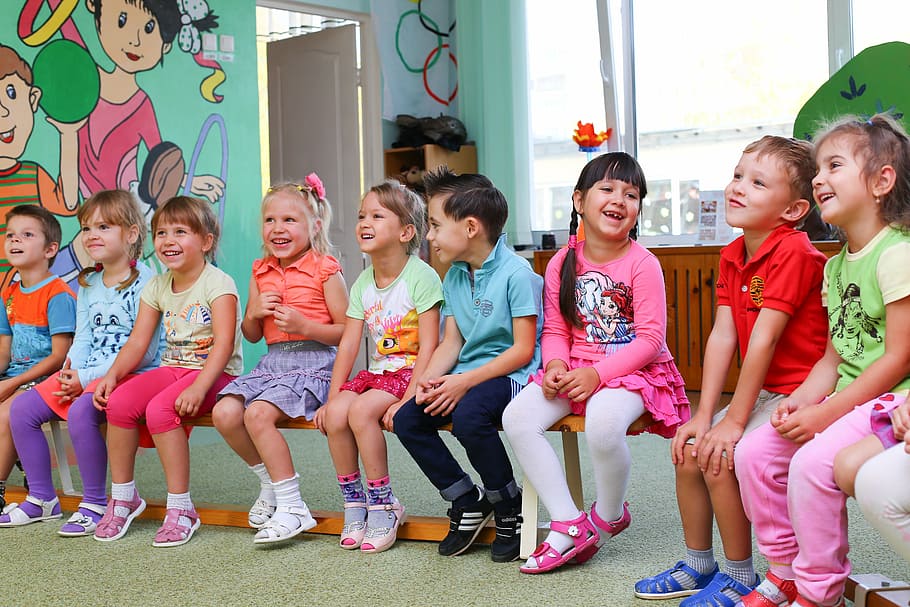Leander ISD has received federal stimulus dollars to help offset unexpected costs caused by the pandemic.
The federal dollars are provided by the American Rescue Plan (ARP) Elementary and Secondary School Emergency Relief (ESSER) fund. ESSER is distributed as four separate programs: ESSER I (expires September 2022), ESSER II (expires September of 2023), ESSER III (expires September 2024) and ESSER Supplemental (expires August 2023).
ESSER provides resources for:
- critical one-time investments;
- time-limited programming to respond to the pandemic;
- and innovation that can redefine student learning, acceleration, and development.
Engaging the public
To help determine how to use the ESSER funds, Leander ISD embarked on an extensive outreach to stakeholders, which included the following:
- Conducted surveys to district-level staff
- Conducted surveys to campus-level staff
- Conducted surveys to parents
- Sent direct communication to staff, parents, and students to gather input
- Reviewed and analyzed data from local and state health authorities
- Reviewed documented comprehensive needs assessment considering the pandemic to determine needs
- Consulted with local school board to determine needs
- Followed documented emergency plan with specific needs assessment processes
The following processes were utilized to prioritize needs with specific focus on:
- Needs serving the largest number of students
- Serving needs of identified student groups (at-risk, migrant, immigrant, students with disabilities, English Learners, Homeless, Foster, etc.)
- Facility needs
- School operational needs
- Technology needs
ESSER Public Feedback: Opportunity for Public Feedback Log
Identified priorities
- Addressing learning needs among students, including low-income students, students with disabilities, English learners, racial and ethnic minorities, student experiencing homelessness, and children in foster care
- Administering and using high-quality assessments
- Implementing evidence-based activities to meet the comprehensive needs of students
- School facility repairs and improvements to enable operation of schools to reduce risk of virus transmission and exposure to environmental health hazards, and to support student health needs
- Inspection, testing, maintenance, repair, replacement, and upgrade projects to improve the indoor air quality in school facilities, including: filtering, purification and other air cleaning, fans, control systems
- Other activities that are necessary to maintain the operation of and continuity of services in the LEA
- Other activities that are necessary to continuing to employ existing staff of the LEA
| ESSER I | ESSER II | ESSER III | ESSER Supplemental |
|---|---|---|---|
| $762,172 | $7,040,159 | $15,816,305 | $10,944,938 |
Note: To ensure continuity of services, ESSER I and ESSER II funds replaced previously funded state aid.
What is our comprehensive ESSER plan?
Leander ISD’s ESSER plan will address students’ needs and accelerate progress toward our goals through the following strategies:
- The Healthy Students, Healthy Schools, Healthy Community strategy focuses on physical, mental and emotional health.
- The Equitable Access to Learning & Enrichment strategy focuses on ensuring every student can fully engage with learning while also having access to outstanding enrichment opportunities.
- The Learning Recovery & Acceleration strategy will help mitigate learning loss caused by the pandemic.
- The Maintenance of Operation and Continuity of Services strategy will allow the district to continue employ high-quality staff.

Healthy Students, Healthy Schools and Healthy Community
Focus on physical, mental, and emotional health. The district plans to allocate 9 percent ($3,138,558) of its ESSER funds to the following strategies:
| ESSER Supplemental | 2021–22 | 2022–23 | 2023-24 |
|---|---|---|---|
| Temporary Clinic Assistants to Contact Trace on Campuses | $15,000 | ||
| Air Quality Improvements: Merv Filter Cost | $816,660 | $1,300,000 | |
| Recess Carts for Elementary to Facilitate Social Engagement | $20,128 | ||
| Clinical Laboratory Improvement Amendment (CLIA) Certificate of Waiver for Contact Tracing on Campuses | $180 | ||
| Mental Health Specialists | $120,000 | $230,000 | |
| Custodial Supplies | $87,780 | $270,000 | |
| Total | $1,041,749 | $1,800,000 | $0 |
| ESSER III | 2021–22 | 2022–23 | 2023-24 |
|---|---|---|---|
| Additional Elementary Counselors | $149,512 | $50,000 | $78,085 |
| Mental Health Specialists | $166,000 | $454,155 | |
| Clinic health aid to assist with contact tracing | $17,615 | ||
| Clinic health aides | $74,102 | $77,514 | |
| Air Quality filters/Merv | $500,000 | ||
| Total | $167,127 | $290,102 | $1,109,754 |

Equitable Access to Learning & Enrichment
Focus on ensuring every student can fully engage with learning while also having access to outstanding enrichment opportunities. The equity-minded investment will help improve technology and expand opportunities for students to fully explore their passions. ESSER II grant ended at the end of the 2022-2023 school year.
| ESSER II | 2021–22 | 2022–23 | 2023-24 |
|---|---|---|---|
| Virtual Teachers | $1,631,483 | $1,000,000 | n/a |
| Virtual School: Extra Class Sections | n/a | ||
| Virtual Teachers: Special Education | n/a | ||
| Virtual Assistant Principal | $82,522 | n/a | |
| Virtual Counselor | $71,566 | n/a | |
| Virtual Technology Specialist / Instructional Coach | n/a | ||
| Virtual Instructional Materials | $17,749 | n/a | |
| Virtual Edgenuity Licenses | $20,000 | n/a | |
| Virtual Software: RAZ Kids Plus | $9,500 | n/a | |
| Virtual Software: Firelight | $3,273 | n/a | |
| Virtual Learning: Professional Development for Virtual Teachers | $12,000 | n/a | |
| Total | $1,851,693 | $1,000,000 | n/a |
| ESSER III | 2021–22 | 2022–23 | 2023-24 |
|---|---|---|---|
| Software and Digital Resources Implemented Due to COVID | $314,340 | $227,465 | $9,315 |
| Special Education Software | $31,729 | $31,729 | |
| Center for Educational Leadership Professional Development | $31,729 | ||
| Replacement of Technology due to COVID | $239,289 | ||
| Virtual teacher | $359,820 | ||
| Virtual School:Extra Class sessions | $3,500 | ||
| Virtual teacher: SPEd | $74,234 | ||
| Virtual SLP (.33) | $24,124 | ||
| Virtual Assistant Principal | $113,315 | ||
| Virtual Technology Specialist/Instructional Coach | $69,420 | ||
| Total | $585,358 | $290,923 | $653,728 |

Learning Recovery & Acceleration
This strategy will help mitigate academic gaps caused by the pandemic. The district set aside at least 20% ESSER III and at least 62.5% in ESSER III- Supplemental to address student learning loss.
| ESSER Supplemental | 2021–22 | 2022–23 |
|---|---|---|
| Secondary Student Success Facilitators | $1,811,599 | $2,306,434 |
| Region 13: Reading Academies | $72,000 | $72,000 |
| Technology for Student Success Facilitators | $84,839 | |
| Ultimate Speech Language Pathologist Online Application | $936 | |
| Online Software to support Intervention and foundational mathematics | $111,385 | |
| MAP Growth Assessment (specific response to pandemic) | $255,150 | $354,850 |
| Total | $2,335,909 | $2,733,284 |
| ESSER III | 2021–22 | 2022–23 | 2023-24 |
|---|---|---|---|
| Summer School Costs for Students Identified as Emergent Bilingual, At-risk, Special Education | $319,768 | $620,914 | |
| Interventionists | $133,532 | $58,024 | |
| Instructional Coaches for English Language Arts | $1,963,108 | $1,800,000 | $2,165,604 |
| Learning Management System Implementation Personnel | $134,525 | ||
| Universal Screener (IStation) | $323,003 | ||
| Technology / Furniture for New Positions | $135,000 | ||
| Secondary Student Success Facilitators | $2,613,078 | ||
| Elementary Math Co-teachers | $359,820 | ||
| Total | $2,584,411 | $1,992,549 | $5,759,416 |
Maintenance of Operation & Continuity of Services
The remaining ARP ESSER funds will be used for allowable activities that are necessary to maintain the operation and continuity of services in the district and that are necessary for continuing to employ existing staff.
| ESSER Supplemental | 2021–22 | 2022–23 | 2023-24 |
|---|---|---|---|
| Custodial Supplies for Sanitization in Response to Pandemic | $87,781 | $270,000 | |
| Remaining Funds to Address Needs Arising from the Pandemic | $732,537 | $732,536 | |
| Indirect Costs | $368,396 | $842,746 | |
| Total | $456,177 | $1,112,746 | $0 |
| ESSER III | 2021–22 | 2022–23 | 2023–24 |
|---|---|---|---|
| Teachers Assigned to Reduced Class Size | $139,258 | ||
| Remaining Funds to Address Needs Arising from the Pandemic | $272,157 | $272,157 | |
| Indirect Costs | $302,773 | $442,620 | $605,515 |
| ITeach | $77,100 | ||
| Total | $302,773 | $581,878 | $682,615 |
| ESSER II | 2021–22 | 2022–23 | 2023-24 |
|---|---|---|---|
| Prekindergarten Instructional Assistants | $459,725 | $20,000 | n/a |
| Special Education Teacher | $63,929 | $69,812 | n/a |
| Texas Teachers of Tomorrow Contract and Testing Fees | $89,700 | $43,000 | n/a |
| Remaining Funds to Address Needs Arising from the Pandemic | $1,254,107 | $1,254,107 | n/a |
| ITeach | $43,840 | $77,100 | n/a |
| Indirect Costs | $266,743 | $546,403 | n/a |
| Total | $2,178044 | $2,010,422 | n/a |
In compliance with TEA guidance, the district sought public input and updated the ESSER plans accordingly. Every six months a public hearing was held and input was considered. Additionally, the district provided an online feedback tool to collect any other input. In anticipation of each grant expiring, LISD held a final public input hearing on May 11, 2023, which is consistent with TEA’s guidance for compliance. The ESSER plans have been adjusted as needed. The district will continue to review, track, and maintain expenses.
Frequently Asked Questions
What is the purpose of the ARP ESSER funds?
The purpose of ESSER is to award subgrants to local educational agencies (LEAs) to address the impact that COVID-19 has had, and continues to have, on elementary and secondary schools.
How much funding is available to Texas LEAs?
A total of $12,418,588,778 is available to the state. Ninety percent, or $11,176,729,900, will be awarded to eligible LEAs. Note that only two-thirds of the total state allocation ($8,279,059,186) is available at this time.
How will LEAs know their grant amounts?
Grant allocations will be posted on the Grants Administration Entitlements webpage.
What is the funding period for ARP ESSER funds grants?
Funds may be used for allowable activities from March 13, 2020 (with approved pre-award) through Sept. 30, 2023.
What are the requirements pertaining to the LEA ESSER Use of Funds Plan?
- The LEA must engage in meaningful consultation with stakeholders and give the public an opportunity to provide input in the development of its plan for the uses of ARP ESSER funds.
- The LEA must provide its plan for the uses of ARP ESSER funds in an understandable and uniform format.
- The LEA’s plan for the uses of ARP ESSER funds will be posted to the LEA’s website within 30 days of receiving its ESSER Notice of Grant Award.
Are the ESSER funds required to be used for specific purposes?
Yes, LEAs must expend a minimum of 20 percent of their grant funds on:
- Evidence-based interventions, such as summer learning, extended day comprehensive after school programs, or extended school year programs; and
- Ensure interventions respond to students’ academic, social, and emotional needs and address the disproportionate impact of coronavirus on student populations as defined in ESEA, Title I, Part A, students experiencing homelessness, and youth in foster care.
Are there recommended uses of ESSER funds that will assist LEAs in addressing the impact of the COVID pandemic and disruptions to learning?
While keeping in mind the purpose and requirements under ESSER related to accelerating student learning, TEA strongly encourages school districts to plan to use these one-time federal funds expeditiously over the entire covered period to facilitate a more comprehensive long-term approach to learning acceleration.
This may include aligned strategies that are currently part of a district’s current plans and strategies. A qualitative review of draft local learning acceleration plans revealed the following trends and suggestions, including but not limited to:
- Professional Development: comprehensive Reading Academies, high-quality instructional materials, dyslexia training, professional development stipends, technology integration training;
- Extended Instructional Time: summer learning, flexible skill-based tutorials
- Staffing: tutors, reduced class sizes, small group instruction, staff retention and recruitment, stipends, after school enrichment programs, instructional coaching and leadership;
- Facilities: ventilation, cleaning, HVAC systems, specialized instructional spaces;
- Technology: devices, infrastructure upgrades, learning management systems, digital tools, educational application;
- Mental Health and Behavioral Supports: social workers, family services team, at-risk campus coordinators, additional counseling services, teacher training and programming, wrap-around and community partnerships.
What are some of the allowable uses of the ARP ESSER funds?
ESSER funds are designated to be used in any or all of 15 areas, which include addressing learning needs, providing professional development, improving indoor air quality, providing social and emotional supports, updating and providing technology, and others (FAQ from TEA)
Will the state provide replacement funds for ESSER after 2023?
Since the large influx of ESSER funding into LEAs can result in funding deficits when it ends, the LEA must plan for how to effectively and efficiently use the ESSER funds. It is recommended to use the ESSER grant funds for one-time or short-term expenditures to address the identified needs caused by the pandemic. Although long-term uses of the ESSER funds are also allowable, these types of uses may cause the LEA to not have funding to continue these activities after the ESSER period of availability ends, thus creating fiscal deficits.
